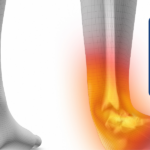
What is bunion surgery?
Bunion surgery is done to reduce the pain and correct the deformity caused by a bunion. A bunion (hallux valgus) is an enlargement of the bone or tissue around a joint at the base of the big toe or at the base of the little toe. This one is called a “bunionette” or “tailor’s bunion.” Bunions often form when the joint is stressed over a prolonged period. Most bunions form in women, primarily because women may be more likely to wear tight, pointed, and confining shoes. Bunions may be inherited as a family trait. Bunions may also result from arthritis. This often affects the big toe joint.
The type of surgical procedure performed depends on the severity of the bunion, your age, general health, activity level, and the condition of the bones and connective tissue. Other factors may influence the choice of a procedure used:
- Mild bunion. For this type of surgery, the surgeon may remove the enlarged portion of bone and realign the muscles, tendons, and ligaments surrounding the joint.
- Moderate bunion. For a moderate bunion, the surgeon may cut the bone and shift it to its proper position. Whether or not the bone is cut depends on the severity and location of the deformity. In addition, the surrounding tendons and ligaments may need to be repositioned.
- Severe bunion. For a severe bunion, surgery may involve removing the enlarged portion of the bone, cutting and realigning the bone, and correcting the position of the tendons and ligaments.
- Arthritic bunion or big toe joint. If the joint is damaged beyond repair, as is often seen in arthritis, it may need to be fused. This allows the bones to heal together and eliminate movement and pain. Occasionally, joint replacement implants may be used in the reconstruction of the big toe joint.
What are the risks of bunion surgery?
As with any surgical procedure, complications can happen. Some possible complications may include:
- Stiffness
- Numbness
- Swelling
- Delayed healing
- Infection
Other complications may include recurrence of the bunion, nerve damage, and continued pain. The surgery may also result in overcorrection of the problem, in which the big toe extends away from the other toes.
What happens during bunion surgery?
Bunion surgery may be done on an outpatient basis or rarely as part of your stay in a hospital. Procedures may vary depending on your condition and your healthcare provider’s practices.
Most bunion surgery is performed under ankle block anesthesia, in which your foot is numb, but you are awake. Occasionally, general or spinal anesthesia is used.
Surgical Procedures
In general, the common goals of most bunion surgeries include:
- Realigning the metatarsophalangeal (MTP) joint at the base of the big toe
- Relieving pain
- Correcting the deformity of the bones making up the toe and foot
Because bunions vary in shape and size, there are different surgical procedures performed to correct them. In most cases, bunion surgery includes correcting the alignment of the bone and repairing the soft tissues around the big toe.
Treatments
Book Appointment
Book Your Appointment Today
We welcome your questions Do you have questions regarding your own situation? Do you actually want to resolve your problem and not just temporarily cover up the pain?




